- Home
- Neil Gaiman
Stories: All-New Tales ngss-1 Page 37
Stories: All-New Tales ngss-1 Read online
Page 37
Yet he had continued to adhere to the four main directives of the contingency plan, almost as articles of faith: remain at the last position reported to headquarters, maintain all necessary discretion and secrecy, continue to chronicle the people and their society to whatever extent possible, and await retrieval. “Retrieval” is the closest English translation of the word in the orders, not “rescue,” a bit of stoic bureaucratese he had come to resent ever since the crash. (Had he gone native? Probably.)
So here he was, living in a city now a thousand times larger than when he arrived, chronicling and waiting, chronicling and waiting, chronicling and still waiting.
After he read End Game and Waiting for Godot at the Chicago Public Library one pleasantly frigid afternoon near the end of December 1959, he wrote a long, elusive fan letter to Samuel Beckett in Paris, describing the two plays as “perhaps the most profound works of literature since Shakespeare.” Discovering them, he gushed, had “made this Christmas one of my merriest ever.” In response he received a curt, generic form letter, mimeographed, which struck him as almost funny. Since the stranding, he has not been an outwardly jovial man, but he’s never lost his sense of humor. By nature and by training, he takes the long view.
And so he was more intrigued than anxious when the little light on the remote beacon had, for the first time ever, started flashing. He wasn’t sure exactly when the flashing began, because he kept the device hidden at the back of a high shelf in his bedroom closet. He’d been checking it only once every month or so, grudgingly, feeling like a chump each time he lifted it down, pushed the test button, for the ten thousandth time heard the beep confirming that it worked and the connection was secure-Takes a Licking and Keeps on Ticking! Nothing Outlasts the Energizer Bunny! — and then, after waiting ten seconds for the flashing signal that never came, put the thing back up on the shelf.
Until the remarkable evening of September 16, 2007, when he first saw the throb of purple light and shouted so loudly that his young downstairs neighbor called up to see if he was all right. According to the contingency-plan instructions, the light on his box could flash in one or more of nine different colors, each color corresponding to a particular alert condition. Purple means that sensors on the exterior of the station, 2,400 miles away, are now exposed to sunlight.
When the station was set up all those years ago, covered by dozens of feet of ice even at the height of summer, its secrecy seemed guaranteed. Nobody else, not Peary or Amundsen or Byrd or free-ranging Inuits, had traveled so far north. But for the last several decades, more of the Arctic ice had been melting each summer-and in 2007 the summer melt radically spiked, turning a third of the polar ice cap into open sea. The top of the station, a 150-foot oval of tubing and tanks suspended just beneath the water’s surface, must be visible. And now there are permanent research stations scattered all over the high Arctic, and surveillance satellites shooting high-resolution pictures of every rod and furlong of the no-longer-trackless wastes.
What was taking them so long to find it? Seasonal ice may still grow back to hide the base in winter, but for each of the last three summers he has waited for the news bulletins (HIGH-TECH “ATLANTIS” FOUND NEAR NORTHPOLE) and the resulting global hysteria. He does worry that the discovery will discombobulate people en masse-the “unforeseeable cultural and ontological impacts,” as headquarters’ boilerplate put it. But he also has a hopeful hunch that a critical, controlling fraction of humanity had matured, and would, after some initial breathlessness, learn to accommodate the new facts.
Selfishly, he’s also eager to see pictures of the station again after all this time, to compare his hazy memories with fresh digital images. And although it felt vaguely insubordinate (to whom?), or even traitorous (to what?), he was excited by the prospect of everyone on earth learning all at once the truth that he alone had known for so long.
AS HER FLIGHT FROM Oslo approaches O’Hare, Nancy Zuckerman thinks once again of the cliché uttered sooner or later by everyone who spends time in Svalbard, including herself: This is what it must be like to live on another planet. NASA actually runs a research station on the other side of the North Pole, in the Canadian Arctic, where they simulate the conditions of a Martian space colony.
She had always liked spending time outdoors, and when she was seven could stick a live worm on a fishing hook and set up a tent herself. But it was the second Indiana Jones sequel, which came out the summer she turned eight, that decided her on becoming an explorer when she grew up. In earlier generations, adults would have smiled at a little girl who said she wanted to be an explorer. But at the turn of the twenty-first century in Boulder, Colorado, adults smiled and patronized little Nancy Zuckerman not because of her gender but because her cute dream job no longer existed.
Fortunately, she was both collegial and self-reliant, a cheerful team player as well as a cheerfully independent loner. “If I could be a superhero,” she used to say, “I’d be totally willing to be like a second-string member of X-Men or the Justice League.” And so science in general and her chosen field in particular-exploration geophysics, specializing in the Arctic-suited her. She hadn’t minded spending the last year and a half on a postdoc in Longyearbyen, a town in the Svalbard islands, northernmost Norway, 1,200 miles up from Oslo and 600 miles below the North Pole. It was and it wasn’t a fortress of solitude. Her fellow researchers and faculty were a cosmopolitan, caffeinated assortment of English speakers from all over the world, chatty good company for the six months of perpetual sunlight. And Einar, a single young coal miner who’d grown up in Svalbard and had no idea how handsome he was, made the six months of subzero darkness tolerable, even though (or maybe because) he spoke very little English. She played squash, she swam in the indoor pool, she took pictures.
She was attached to one team drilling experimental wells to store captured CO2 in a sandstone aquifer, and part of another project testing the feasibility of thickening the polar cap by pumping seawater onto the ice and letting it freeze. Good data had been collected. Techniques had been refined. Reasonable progress had been made. It wasn’t heroic exploration of the kind she’d imagined as a kid, but as she approached thirty she had made her peace with the exigencies of incremental science and the real world.
Or so she had thought until a few weeks ago. She was five days into an excursion aboard the university’s sixty-eight-foot research vessel, the Dauntless, taking a group of new undergraduates on a tour of the southern edge of the ice cap. Around two A.M. on the morning of July 11, unable to sleep, she’d gotten up and taken one of the motorboats out alone to cruise close to the ice, looking for polar bears to photograph. It was warm, 46ºF, the sky almost cloudless, and, of course, the sun high in the sky. The sea was calm. Thirty yards from the ice, at the mouth of a recently formed inlet, she cut the motor and let herself drift along, sitting cross-legged on the deck at midships, watching, camera and long lens at the ready. She was exploring. A half hour passed. Some terns flew over, but she saw no seals and no bears.
When she heard and felt the thud, she figured she’d struck a chunk of submerged ice. As she stood to investigate, the boat rocked freely in the water even though it was stuck more or less in place, knocking against some underwater structure to its left and its right. It was as if the boat had slid into a marina slip.
What the fuck?
She started probing underwater with the tip of an oar blade, and a foot and a half beneath the surface found not ice, but what felt like pipe, a big pipe, a pipe with a diameter-she scraped and stroked the hard surface-of several feet. She climbed over to the starboard side to probe some more, and found an apparently identical pipe, running parallel to the other. The distance between them was ten, maybe twelve feet.
Completely bizarre.
A sunken ship? Even the fleeting thought made her feel childish and silly. The water was a mile deep. No way a wreck could float to the surface, and ditto for stray lengths of oil or gas pipeline. Unless, shit, she’d discovered some hitherto unknow
n shoal or reef in the Arctic Ocean! She had discovered something. More to the point, she had discovered something.
Kneeling on the deck, she started to use the oar as a push pole, levering it against the underwater pipe on the port side to propel the boat back-shove, coast a couple of yards, shove, coast-toward the opening through which she must have drifted.
But then, abruptly, the dinghy stopped moving, caught between the mysterious pipes. The pipes didn’t run parallel, it turned out, but came together at an angle, and she was now wedged near their apex. She stood. The boat barely budged. She tried and failed to pole herself forward. She was stuck fast. Crouching and leaning out next to the raised motor, she stuck the oar into the water directly behind the boat-and found another smooth, hard underwater surface. But this was different, not a pipe but some kind of funnel. She used both hands to plunge the oar straight down into the funnel’s neck.
She gasped as she felt the blade end of the oar being smartly, mechanically grabbed, then slowly pulled into the water another foot. She let go. The oar’s hand grip protruded straight up between waves. She stared down, bewildered.
Then she was shocked beyond belief, and terrified. The ocean beneath the boat and in a long, narrow strip beyond began to churn, forming into a 100-foot-long tubular wave-but the very opposite of a breaking surf, for this wave had depth instead of height, its crest not a peak but a trough ten feet below the water’s surface. She thought of her mother and brothers, of her late father, and of the fact that she wouldn’t get any credit at all for discovering this freakish inverted tsunami before it killed her.
But the boat wasn’t swamped or sucked under, and the upside-down wave, instead of crashing, just kept rolling and rolling. In other words, a ten-foot-wide ditch had formed in the sea, with ten-foot sides of smooth water and a sloshing, foamy bottom. Nancy Zuckerman was sitting in a boat suspended by metal pincers-the two big pipes, now fully exposed-at the top of this perfect, impossible ditch.
As in Exodus 14, the waters of the sea had been divided, the waters being a wall on her right hand and on her left. But even at that supremely dreamlike moment, Nancy Zuckerman’s faith in reason and science was unshaken. Miracles are a function of ignorance, inexplicability a temporary condition. By some mechanical means, a hundred thousand gallons of seawater were being sucked away to form a semicylindrical void. It was amazing, but it was also like one of the rides at Water World, off I-25 in Denver.
She had the presence of mind to push the button on her GPS, and press again to record the reading: longitude 14º 48' 53" east, latitude 86º 19' 27" north.
And then she was vindicated-although also freshly terrified-when a rubbery blue sleeve rose from the pit beneath the boat and wrapped itself tightly around the hull with a vacuum-packing thrrrooooop. Definitely a machine at work, not God or Satan. As the dinghy started moving smoothly and slowly into the slot in the sea, she considered escape-she might be able to dive out past the edge of the slot and swim away, might make it to the ice and pull herself out of the water before hypothermia set in, might be rescued by searchers from the Dauntless after they discovered her and the dinghy missing. But curiosity kept her in the boat. As the machine moved her down into the mists and darkness, Nancy was careful to notice everything she heard and saw and smelled. She was an explorer.
TWELVE DAYS AGO, HIS beacon-now out of the closet and sitting on the coffee table in the living room-had started alternating a chartreuse throb with each purple one. Chartreuse meant that someone had entered the station. And the station’s mapping console, assuming it still worked, would give the intruders the precise location of the remote beacon. He thought of getting rid of the device, leaving it on the El or heaving it into the Chicago River, to put the hounds off his scent. But then he admitted, once and for all, that he wants to be tracked down. He craves being found.
And so he has gotten all his documents and images in order, the entire chronicle. He has packed a suitcase, and straightened up the apartment. He has been watching cable news and surfing the Web constantly. Surely it is only a matter of time.
But he’s surprised when the front-door buzzer buzzes. He had expected helicopters and floodlights and grappling hooks and special-ops troopers in black visors and haz-mat suits bursting through the doors and windows with automatic weapons and gas canisters, and had even practiced dropping to the floor and putting his hands over his head. The Obamas’ Hyde Park house is ten minutes from his apartment, which he’d figured would make the brouhaha all the more spectacular. As he stands at the intercom speaker, he looks out the window down at Kimbark Avenue: cars driving past, people strolling by and hanging out as on any summer afternoon, no evacuation of the block, no emergency vehicles, no perimeter secured.
The doorbell buzzes again. He wonders if it’s the UPS guy.
“Yes?”
“Hello?” A woman, sounding tentative.
“Yes?”
“I’m looking for someone who, um, also lives at 86 degrees, 19 minutes, 27 seconds north?”
He grins, and buzzes her in.
Opening the apartment door, he’s surprised all over again: she’s alone, apparently unarmed, and very young. She extends her right hand.
“I’m Nancy Zuckerman.”
“Hello. I’m Nicholas Walker.”
“I’m a scientific researcher,” she says. “From the Arctic.”
“Really?” He smiles, and motions her inside. “So am I! How very fortunate. For the both of us.”
THEY SIT. SHE SETS aside the cardigan he’d handed her, and explains herself in a nervous rush. Why she had been in the Arctic, how she happened to drift over the station and accidentally jimmy the entry system with her oar. How she’d figured, at first, that it must be some military facility, American or Russian or Chinese, but then, as she spent hours exploring the interior-the peculiar materials and shapes and technology interfaces, the very peculiar quality of artificial light, the unrecognizable written language, the images displayed-how she had developed a new hypothesis. How she had photographed everything, including the mapping console with its one, tiny blinking light in the middle of North America, and then, on her computer back in Longyearbyen, had transposed a longitude and latitude grid over her image to find the precise location of the blinking light-41 degrees, 47 minutes, 54.1475 seconds north and 87 degrees, 35 minutes, 41.7095 seconds west, South Kimbark Avenue between 53rd and 54th Streets, Chicago. How she had taken a few things from the station-including a small plastic picture of him, which she had just shown to a lady downstairs in order to find his apartment. She hands him the picture.
“My goodness,” he says, “I was young. So young!” He puts the picture down and turns to look at her. They’ve talked for ten minutes, yet she hasn’t asked where he’s from or what he’s doing here. Which is fine by him. He’s in no particular hurry.
She’s a little flummoxed. “I have to tell you I am incredibly excited. This is beyond surreal. It’s like I’m having a stroke, or been drugged, or gone to heaven. It’s-it’s a new category of excitement.” She takes a deep breath. “I’m also scared.”
“Scared? Of me? Oh, don’t be. No, no, no.”
“No, scared that I haven’t told anyone about any of this-not my colleagues, not my bosses, not any government people, not my mom, no one. I don’t know what the rules are, but I sure as shit haven’t followed them.”
How interesting. “Why have you kept it secret?” He knows about keeping secrets.
“Well, I guess possibly I worried that…no, I’ll tell you why. Because I want to be the one who gets to reveal it, to tell the whole story. To be, you know, ‘the discoverer.’ Like Columbus or Magellan or Galileo or Einstein. I’m sorry-do you know who they are?”
He smiles. “Yes.”
“Before the rest of the world finds out and rushes in and pushes me out of the way, I want to learn as much as I can. I want to be the expert.”
He likes this girl. He will give her the gift she wants.
“Oh, Jes
us.” She reaches into a bag, searching for her two tape recorders. “May I record our conversation?”
“Of course.” He spots something in the bag. “You found the gold? At the station?”
She blushes, and pulls out a half-pound golden cylinder the size of a lipstick. “You can have it back. I took one, as a research sample.”
He strokes the ingot with one finger. “And you said you saw images at the station?”
“Projected on those big spherical monitors in the, like, office.”
“To the left and straight back as you entered?”
“Hundreds of pictures on those monitors, 3-D photographs, in color, of huts and houses and towns and farm animals and pots and carts and soldiers and children and temples, it looked like from all over the world, Europe, Asia, Africa-”
He hates to seem smug, which he’s afraid is about to become his default affect, but he can’t suppress a knowing smile, and interrupts her. “I know. I took them.”
“Shot from overhead, mostly, I guess with a very long lens?”
“Intelligence gathering is supposed to be clandestine. And I tried to minimize the Hawthorne elect-people behaving differently when they know they’re being watched.”
“A lot of the images look extremely old. Unbelievably old. Not the pictures, I mean, but the people and buildings and so on.”
“They are.”
She hesitates before asking the next question. “So, you were taking photographs all over the world before…before photography was invented?” This is precisely what she’d hypothesized, that he must be at least two hundred years old. Incredible.
“And moving pictures as well-videos, more or less. From when I arrived until the day the camera was destroyed. By the time the technology existed…indigenously, it seemed pointless for me to start up again.”

 The Sleeper and the Spindle
The Sleeper and the Spindle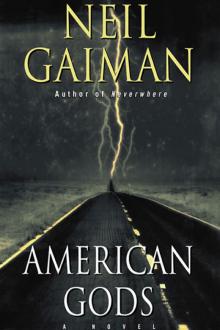 American Gods
American Gods Coraline
Coraline The Sandman: Book of Dreams
The Sandman: Book of Dreams Murder Mysteries
Murder Mysteries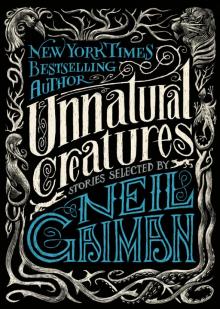 Unnatural Creatures
Unnatural Creatures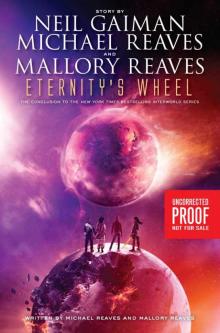 Eternity's Wheel
Eternity's Wheel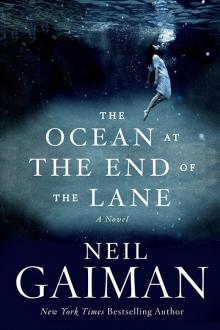 The Ocean at the End of the Lane
The Ocean at the End of the Lane Good Omens
Good Omens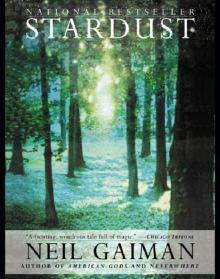 Stardust
Stardust Odd and the Frost Giants
Odd and the Frost Giants The Graveyard Book
The Graveyard Book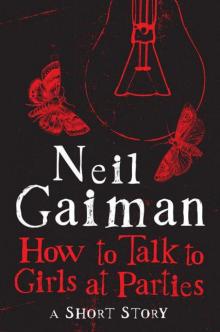 How to Talk to Girls at Parties
How to Talk to Girls at Parties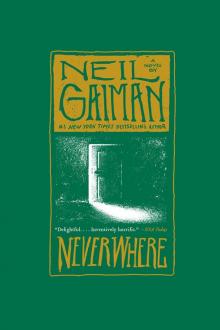 Neverwhere
Neverwhere Snow, Glass, Apples
Snow, Glass, Apples Anansi Boys
Anansi Boys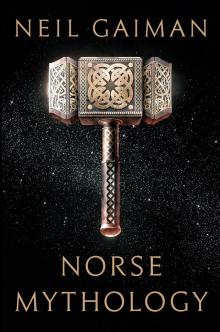 Norse Mythology
Norse Mythology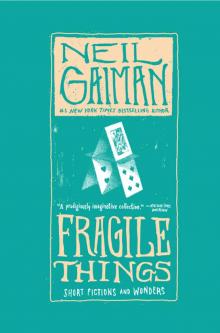 Fragile Things: Short Fictions and Wonders
Fragile Things: Short Fictions and Wonders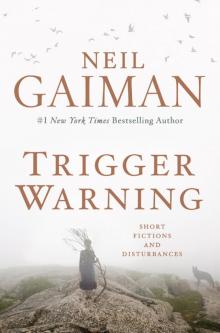 Trigger Warning: Short Fictions and Disturbances
Trigger Warning: Short Fictions and Disturbances InterWorld
InterWorld The Monarch of the Glen
The Monarch of the Glen The Neil Gaiman Reader
The Neil Gaiman Reader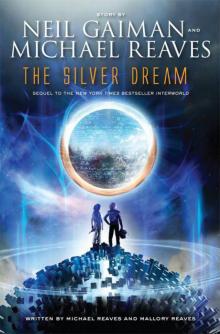 The Silver Dream
The Silver Dream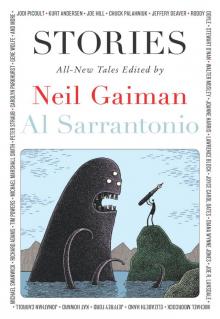 Stories
Stories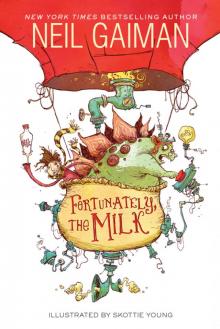 Fortunately, the Milk
Fortunately, the Milk Art Matters
Art Matters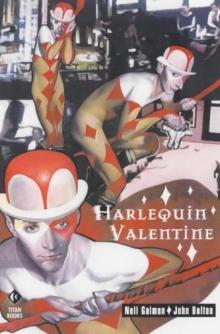 Harlequin Valentine
Harlequin Valentine The Quite Nice and Fairly Accurate Good Omens Script Book
The Quite Nice and Fairly Accurate Good Omens Script Book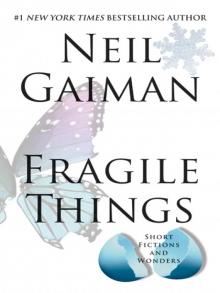 Fragile Things
Fragile Things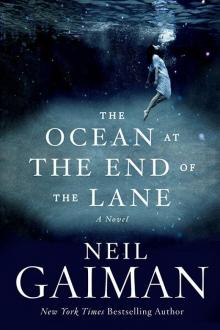 The Ocean at the End of the Lane: A Novel
The Ocean at the End of the Lane: A Novel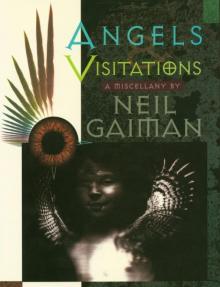 Angels and Visitations
Angels and Visitations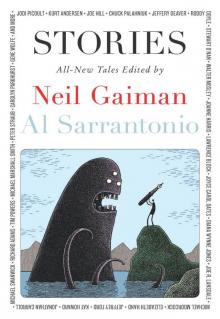 Stories: All-New Tales ngss-1
Stories: All-New Tales ngss-1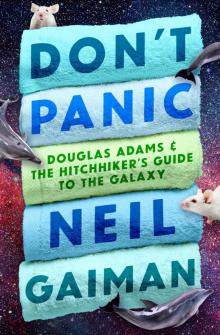 Don't Panic
Don't Panic Darker Terrors
Darker Terrors Neil Gaiman Young Readers' Collection
Neil Gaiman Young Readers' Collection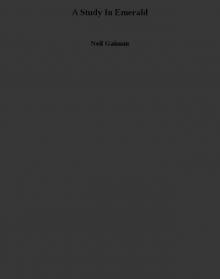 A Study In Emerald
A Study In Emerald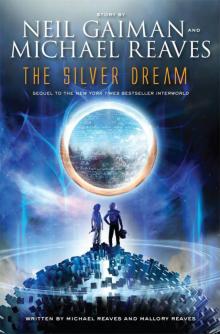 The Silver Dream: An InterWorld Novel
The Silver Dream: An InterWorld Novel Feeders and Eaters
Feeders and Eaters Psychos
Psychos The View from the Cheap Seats
The View from the Cheap Seats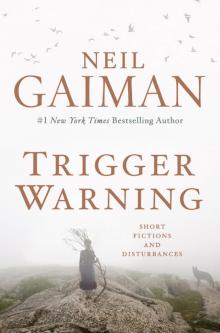 Trigger Warning
Trigger Warning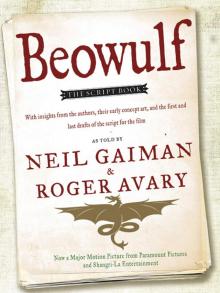 Beowulf
Beowulf Nessun Dove
Nessun Dove Doctor Who: Nothing O'Clock: Eleventh Doctor: 50th Anniversary
Doctor Who: Nothing O'Clock: Eleventh Doctor: 50th Anniversary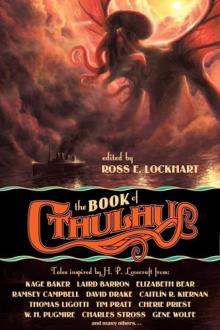 The Book of Cthulhu
The Book of Cthulhu